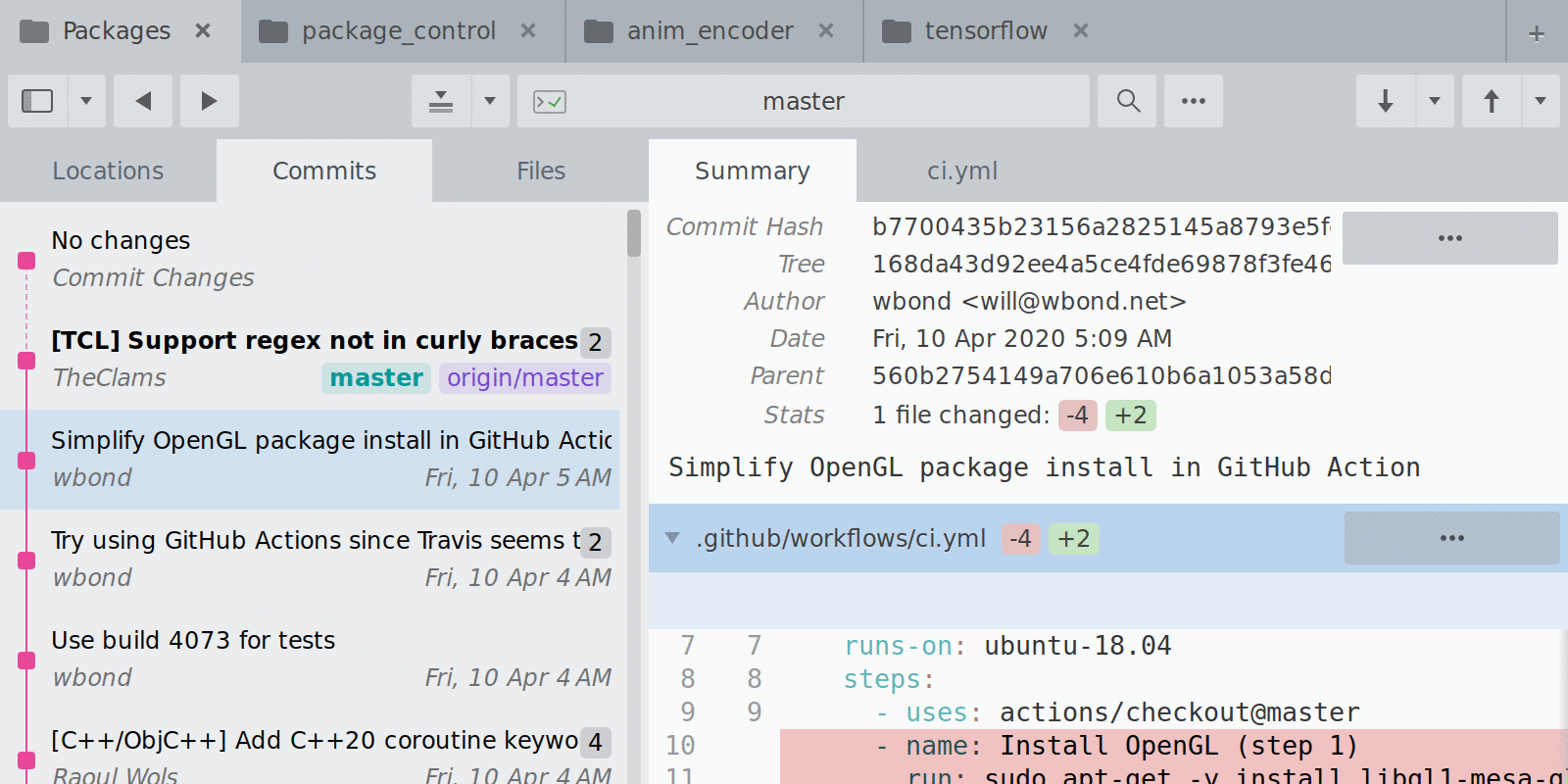Sublime Merge includes a command line tool, smerge, to work with repositories on the command line. This can be used to open repositories, search, and merge files. Windows: Add C:Program FilesSublime Merge to your%PATH%. To invoke the merge tool, run git mergetool. When I run git mergetool, the Sublime will opening with four columns:.remote,.base,.local and the current file. But, all columns are empty. After adding git merge tool as sublime. # use Sublime as your merge tool: git config -global mergetool.sublime.cmd ' subl -w $ LOCAL $ REMOTE ' git config -global mergetool.sublime.trustExitCode false: git config -global merge.tool sublime: git mergetool -y.
I finally got tired of reading diff outputs from git on the command line, and decided to hook up a visual diff and merge tool. After piecing together hints from various posts around ye olde intraweb I've now got somethings that works. I am using Git on MSys to get Git working on Windows via a PowerShell command line, but a similar setup might work via Cygwin or via the cmd.exe command line.
Setting up a diff tool
git difftool instead.The easiest way I found to do this was to create a shell script wrapper for your diff tool of choice. To make things easy on me I put the script, git-diff-wrapper.sh in C:Program FilesGitcmd, which is in my Path environment variable. The file contents looks like this:

The basic format of this is stolen directly from this post on the Msysgit site. Provided your diff tool can be called from the command line, you'll be able to set it up to work with Git using this template. In this case I've used it to setup a call to Sourcefear's DiffMerge, a nice free (as in beer) diff and merge tool.
You'll also see I've commented out calls to WinMerge and KDiff3, which are both free as in beer and speech. I ended up settling on DiffMerge because it is purdy (unlike KDiff3 – sorry), and also does 3-way merges (unlike WinMerge, which was my previous diff tool of choice).
The next step is telling Git about your wrapper. In your home directory (C:Users(username) or the corresponding Documents and Settings equivalent) Git will normally have created a .gitconfig file. Icon maker (asset catalog for app store icons) 1 5. If not then go ahead and create one. You'll need to have the following section in there:
We can now use git diff and it will fire up our diff tool of choice.
Setting up a merge tool
I had more trouble getting a merge tool working, largely because putting references to paths like C:/Program Files/.. in .gitconfig seems to bork when used here. Again I ended up using the wrapper approach, creating git-merge-diffmerge-wrapper.sh at C:Program FilesGitcmd to call DiffMerge. This file ended up looking like this:
I unashamedly stole this from Alexander Groß's post on getting DiffMerge running on Cygwin-based Git (with slight modifications, any faults are mine :)). We can then wire this up in .gitconfig again: Orion label and print studio 2 5260.
Now remember that C:Program FilesGitcmd is on my PATH, so I can set the command to call git-merge-diffmerge-wrapper.sh without fully qualifying the path. The details on the arguments are available from the git-mergetool(1) man page. I've also left in a KDiff3 version that seems to work too (Git has some built in support for KDiff3 I think, which is why you can get away with only specifying the path).
Time for a test drive
Let's make sure everything's in working order. I'll open up a PowerShell window and let's see how we go (you'll have to excuse me for using old DOS commands instead of fancy PowerShell ones, I've only just switched to PS after running into various issues with the cmd.exe command line).
echo to stream data into hello.txt the files have ended up in binary mode. Let's ignore that as it is just to get an easy demo going. The important thing is we now have a merge conflict to resolve.If we now type in git mergetool Git ask's us if we'd like to run our merge tool. We can hit enter and up pops DiffMerge. If you wanted KDiff3, we could have called git mergetool -t kdiff3, or any other merge tool in our .gitconfig (by default the tool specified in the merge.tool config option is used).
Resolve the merge conflict however you like and then try this:
Hooray, we have our diff tool working! We can also run commands like git diff HEAD~ HEAD and git diff helloGit master and get the output via our diff tool.
Conclusion
Git Mergetool Sublime Merge
This setup earns the coveted Works on My Machine certification, but even if that's the only place it works then hopefully it still gives you enough information to configure your Windows diff and merge tools for use with Git.
Sublime Merge Mergetool
If you hunt down the relevant command line options you should be able to get pretty much any tool working: Beyond Compare, p4merge, TortoiseMerge etc.
Hope this helps.
